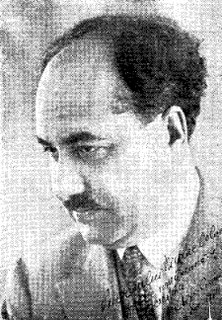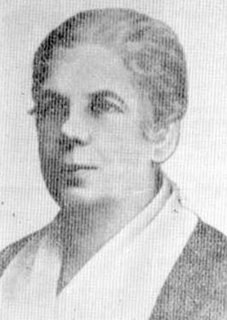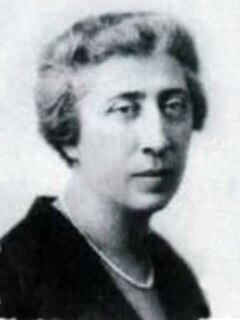Related Research Articles

Nicolae Iorga was a Romanian historian, politician, literary critic, memoirist, poet and playwright. Co-founder of the Democratic Nationalist Party (PND), he served as a member of Parliament, President of the Deputies' Assembly and Senate, cabinet minister and briefly (1931–32) as Prime Minister. A child prodigy, polymath and polyglot, Iorga produced an unusually large body of scholarly works, establishing his international reputation as a medievalist, Byzantinist, Latinist, Slavist, art historian and philosopher of history. Holding teaching positions at the University of Bucharest, the University of Paris and several other academic institutions, Iorga was founder of the International Congress of Byzantine Studies and the Institute of South-East European Studies (ISSEE). His activity also included the transformation of Vălenii de Munte town into a cultural and academic center.

The Iron Guard was a fascist movement and political party in Romania founded in 1927 by Corneliu Zelea Codreanu as the Legion of the Archangel Michael or the Legionnaire Movement. Its ideology was ultra-nationalistic, antisemitic, and opposed to both communism and capitalism; it also promoted its own radicalized version of Eastern Orthodox Christianity.

The term Greater Romania usually refers to the borders of the Kingdom of Romania in the interwar period. It also refers to a pan-nationalist idea.
Clerical fascism is an ideology that combines the political and economic doctrines of fascism with clericalism. The term has been used to describe organizations and movements that combine religious elements with fascism, receive support from religious organizations which espouse sympathy for fascism, or fascist regimes in which clergy play a leading role.

Tudor Vianu was a Romanian literary critic, art critic, poet, philosopher, academic, and translator. He had a major role on the reception and development of Modernism in Romanian literature and art. He was married to Elena Vianu, herself a literary critic, and was the father of Ion Vianu, a well-known psychiatrist, writer and essayist.

Nichifor Crainic was a Romanian writer, editor, philosopher, poet and theologian famed for his traditionalist activities. Crainic was also a professor of theology at the Bucharest Theological Seminary and the Chișinău Faculty of Theology. He was an important racist ideologue, and a far-right politician. He was one of the main Romanian fascist and antisemite ideologues.

Constantin Rădulescu-Motru was a Romanian philosopher, psychologist, sociologist, logician, academic, dramatist, as well as left- nationalist politician.. A member of the Romanian Academy after 1923, he was its vice president in 1935–1938, 1941–1944, and its president between 1938 and 1941.

Ovidiu Coriolan Pecican is a Romanian historian, essayist, novelist, short-story writer, literary critic, poet, playwright, and journalist of partly Serbian origin. He is especially known for his political writings on disputed issues such as regional autonomy for Transylvania, and for his co-authorship of a controversial history textbook for 11th and 12th grade high-school students.

Gândirea, known during its early years as Gândirea Literară - Artistică - Socială, was a Romanian literary, political and art magazine.
Poporanism is a Romanian version of nationalism and populism.
The Heldt Prize is a literary award from the Association for Women in Slavic Studies named in honor of Barbara Heldt. The award has been given variously in the following categories:
Zigu Ornea was a Romanian cultural historian, literary critic, biographer and book publisher. The author of several monographs focusing on the evolution of Romanian culture in general and Romanian literature in particular, he chronicled the debates and meeting points between conservatism, nationalism, and socialism. His main early works are primarily dedicated to the 19th and early 20th century cultural and political currents heralded by Junimea, by the left-wing ideologues of Poporanism and by the Sămănătorul circle, followed independently or in relation to one another. Written as expansions of this study were Ornea's biographical essays on some of the period's leading theorists: Titu Maiorescu, Constantin Dobrogeanu-Gherea and Constantin Stere.

A controversy exists over the national identity and name of the native language of the main ethnic group in Moldova. The issue more frequently disputed is whether Moldovans constitute a subgroup of Romanians or a separate ethnic group. While there is wide agreement about the existence of a common language, the controversy persists about the use of the term "Moldovan language" in certain political contexts.

Sămănătorul or Semănătorul was a literary and political magazine published in Romania between 1901 and 1910. Founded by poets Alexandru Vlahuță and George Coșbuc, it is primarily remembered as a tribune for early 20th century traditionalism, neoromanticism and ethnic nationalism. The magazine's ideology, commonly known as Sămănătorism or Semănătorism, was articulated after 1905, when historian and literary theorist Nicolae Iorga became editor in chief. While its populism, critique of capitalism and emphasis on peasant society separated it from other conservative groups, Sămănătorul shared views with its main conservative predecessor, the Junimea society, particularly in expressing reserve toward Westernization. In parallel, its right-wing agenda made it stand in contrast to the Poporanists, a Romanian populist faction whose socialist-inspired ideology also opposed rapid urbanization, but there was a significant overlap in membership between the two groups. Sămănătorul's relationship with the dominant National Liberal Party was equally ambiguous, ranging from an alliance between Sămănătorul and National Liberal politician Spiru Haret to Iorga's explicit condemnation of 20th century Romanian liberalism.

Izabela Sadoveanu-Evan was a Romanian literary critic, educationist, opinion journalist, poet and feminist militant. She spent her youth advocating socialism, and rallied with left-wing politics for the remainder of her life, primarily as a representative of Poporanist circles and personal friend of culture critic Garabet Ibrăileanu. Under Ibrăileanu's guidance, Sadoveanu wrote for Viața Românească review, where she tried to reconcile ethnic nationalism and traditionalism with aestheticism. As literary critic, she championed the recognition of Symbolism as an independent cultural phenomenon, and reviewed modern developments in English literature.

Petru Bogdan was a Romanian chemist, educator, and politician. In 1926, he was elected a titular member of the Romanian Academy.
The Democratic Union Party was a political group in Romania, one of the political forces which claimed to represent the ethnic Romanian community of Bukovina province. The PDU was active in the wake of World War I, between 1919 and 1923, having for its leader the historian and nationalist militant Ion Nistor. It was formed by Nistor and other activists who wrote for the regional periodical Glasul Bucovinei, and, as a consequence, the party members were commonly referred to as Glasiști ("Glas-ists").
General Congress of Bukovina was a self-proclaimed representative body created in the aftermath of the Romanian military intervention in Bukovina, which proclaimed the union of the region with the Kingdom of Romania in 1918.

For My Legionaries is an autobiographical book by Iron Guard leader Corneliu Zelea Codreanu first published in 1936. The book has been described by historian Irina Livezeanu as being to Codreanu what Mein Kampf was to Adolf Hitler. It was first published in Sibiu, as it was not allowed to pass censorship in Bucharest.

Ella Negruzzi (1876–1948) was a Romanian lawyer and women's rights activist, and the first female lawyer in Romania (1913). She was a co-founder of the women's organization Association for the Civil and Political Emancipation of Romanian Women (1917), the Group of Democratic Lawyers (1935) and the Women's Front (1936).
References
- 1 2 3 4 5 6 Irina Livezeanu's profile at the University of Pittsburgh; retrieved November 5, 2007
- ↑ "Faculty News" Archived 2010-06-11 at the Wayback Machine , in REES News, Vol.12, Number 2, Spring 2010; retrieved January 3, 2011
- 1 2 (in Romanian) Liliana Armaşu, "Irina Livezeanu: 'Pentru mine farmecul Chişinăului constă tocmai în multiculturalismul lui' " Archived 2007-10-19 at the Wayback Machine , in Contrafort, April–May 2002; retrieved November 5, 2007
- ↑ "Briefs", in the Cornell Chronicle, Vol.27, Number 19, February 1, 1996, at the Cornell University site; retrieved November 5, 2007
- 1 2 3 4 5 6 7 8 9 10 11 12 13 14 15 16 17 18 19 20 (in Romanian) Constantin Iordachi, "Romînia Mare - între competiţii ideologice şi consens naţionalist" (review of Cultural Politics in Greater Romania), in Sfera Politicii ; retrieved November 5, 2007
- ↑ Romanian Cinema on the Edge, at the University of Pittsburgh site; retrieved February 26, 2008
- 1 2 3 4 (in Romanian) Maria Bucur, "Ora României", in Revista 22 , Nr.897, May 2007; retrieved November 5, 2007
- 1 2 3 Thomas J. Hegarty, "Book Review. Irina Livezeanu: Cultural Politics in Greater Romania. Regionalism, Nation Building, and Ethnic Struggle, 1918-1930" Archived 2005-03-20 at the Wayback Machine , in Ethnos-Nation Online Archived 2007-11-30 at the Wayback Machine , 6 (1998), at the University of Cologne; retrieved November 5, 2007
- ↑ (in Romanian) Ovidiu Pecican, "Un istoric al României interbelice", in Revista 22 , Nr.915, September 2007; retrieved November 5, 2007